Mountain Bike
Two wheels and a mountain bike: all you need to experience an off-road adventure every day.
Mountain biking is much more than mere physical activity. It’s about challenging yourself on off-road tracks in close contact with nature. From the adrenaline rush of Downhill to endurance in the All-Mountain, via Marathon, XC and Enduro: this discipline of cycling has always been a favourite with the most adventurous of athletes, ready to ride on all types of terrain.
WHAT WILL YOU FIND ON THIS PAGE?
- Where did the Mountain Bike come from?
- MTB today: many disciplines with different characteristics
- The greatest mountain bike champions of all time
- It's never too late to start MTB
- How to clean your mountain bike after a ride
- MTB in winter
- Is it possible to travel by mountain bike?
- Mountain bike wheels: all you need to know
- The main characteristics
- Bedding in
- Ursus wheels for MTB
- MTB wheels and handlebars for amateurs and training
- Competition wheels and handlebars
- Ursus Kodiak wheels: why they’re perfect for XC and Marathon
- Diablo: the Ursus wheels used by Leo Paez and Team Soudal Lee Cougan
Where did the Mountain Bike come from?
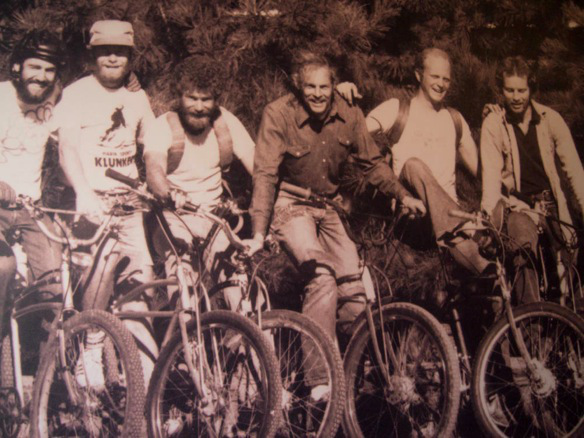
It was the Buffalo Soldiers of the US cavalry who were the first to ride on unpaved roads, kicking off a real revolution in the world of cycling. It was 1896, and it was the first time bikes were officially used off-road; some 70 years earlier, in 1917, the mobility had been overturned by the invention of Drais' machine, considered the prototype of the modern bicycle.
The birth of the mountain bike can be traced back to 1966, when the American cyclist D. Gwynn built his mountain bicycle. Gwynn started a trend, and new models of bikes suitable for bumpy trails, called klunker bikes, began to be developed.
Then, finally, in 1979, Geoff Apps launched the first bicycle with tyres suitable for mud and snow: it was a success. The bike remained on sale until 1984, when it was overtaken by modern mountain bikes.
If you’re fascinated by the history of MTB, you can read more about it in the article “The Mountain Bike: do you know its history?".
Today mountain bikes are increasingly high-performance, with features and accessories optimised for off-road terrain with climbs and descents, and designed to cater for the various disciplines that currently make up the MTB world.
MTB today: many disciplines with different characteristics
As we have said, today’s MTB world is a multifaceted place that includes diverse discipline con delle caratteristiche proprie.
The most common of these are:
- Cross-Country or XC, featuring trails for which both technique and muscle power must be well trained;
- Marathon, a discipline that involves long rides and is based on endurance;
- All Mountain and Trail routes are very long, with climbs and descents in the mountains; these are therefore the heirs of the traditional concept of mountain biking;
- Enduro, a competitive discipline straddling XC and Downhill, with technical sections alternating with flat stretches and descents travelled at high speed;
- the gravity disciplines, so called because the tracks are nearly all downhill and fast: Downhill, Freeride and FourCross.
Today, specific bikes, MTB wheels and handlebars are used for each of these disciplines. The competitions also vary enormously, and athletes specialise in one or two disciplines.
Enduro MTB is one of the most popular: many races around the world welcome thousands of fans, amateurs and professionals of this adrenaline-fuelled sport.
In the article “Enduro MTB: what it is and the most important races” you’ll find an overview of the most important competitions.
The greatest mountain bike champions of all time
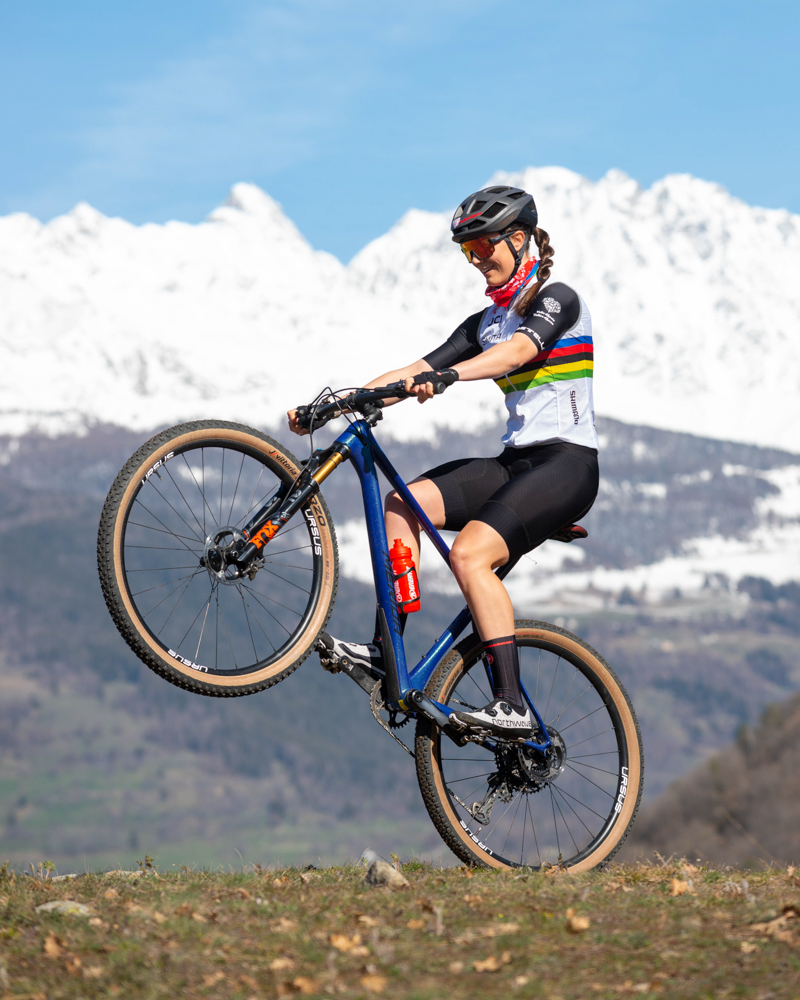
Like every sport, MTB has its own list of champions who have made history. Mountain biking is a complex sport that requires technique, power and endurance; talent is not enough to win races, targeted training is necessary too.
For this reason, the great champions of the mountain bike can be considered examples of perseverance.
Among the world’s most famous and successful athletes are John Tomac (XC and Downhill), Anne-Caroline Chausson (Downhill) and Nino Schurter (XC).
Italy also has some fantastic mountain bikers, who have helped to popularise the sport in the country: Paola Pezzo, Marco Aurelio Fontana and Gerhard Kerschbaumer. Today, younger athletes are taking to the world stage. One of these is Gaia Tormena, winner of the Italian, World and European titles in the XCE Eliminator, and an Ursus Ambassador.
Read "Mountain bike: the names that have made history" to learn more about these extraordinary champions.
It's never too late to start MTB
As we have said, mountain biking requires training and perseverance, but anyone can try mountain biking and embrace a sport that offers unmatched excitement. There’s no age limit, as long as you choose routes and competitions appropriate for your physical fitness and technical ability.
Compared to the past, nowadays cyclists (both beginners and experienced) are aided by technology. Indeed, apps such as Garmin e Strava have become increasingly important for evaluating performance and progress during training, even benchmarking with other athletes of the same level or higher.
However, apps cannot replace advice from a good coach or the athlete’s determination to improve.
In fact, when starting out in MTB, it’s essential to proceed step by step, following a training plan that allows you to develop over time.
This also applies to adults approaching the sport. Cycling is an easy movement, but to support increasingly fun and challenging rides, or to take part in your first races, you need to focus on your physical and technical preparation.
It’s a different matter for professional athletes, who train for a great number of hours and are supervised by a coach who takes care of their various needs: physical, technical, nutrition, motivation.
We delved into all these aspects with Tony Longo, former Marathon and XC champion and now coach of Leo Paez: in the interview you’ll find all his advice on starting out in MTB.
Do you have everything you need to start your Mountain Bike adventure?
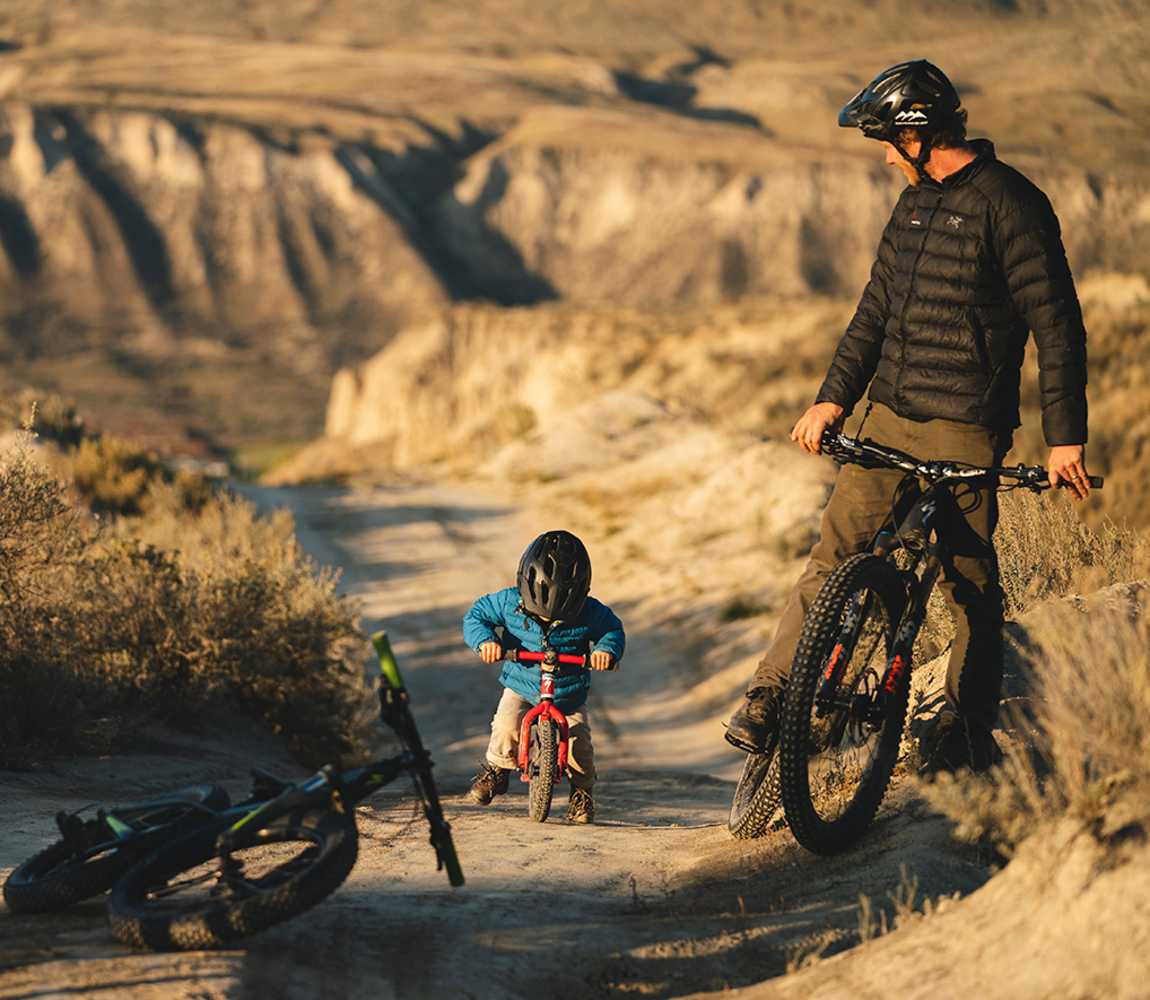
How to clean your mountain bike after a ride
Constant cleaning of the mountain bike is essential. In fact, mud, debris and dirt can damage your bike and its wheels, especially the hubs. Residual dirt can shorten the life of your MTB or wheels, making maintenance even more frequent: for the amateur cyclist in particular, therefore, failure to clean the bike properly adds to your costs.
It’s harmful for even high-level professionals, however, since dirt affects the rolling of the wheels and the smoothness of the bearings, the performance of the disc brakes and many other fundamental mechanisms of the bike.
To clean your MTB you should never use a high-pressure water jet, instead choosing a low -pressure dispenser to remove the bulk of the dirt as you start cleaning.
The process continues with a soft bristle brush and a special bike-cleaning product, carefully brushing even the hidden parts.
After this, degrease the chain and sprockets, but be careful not to use the same product on the disc brakes. You can also use an old toothbrush to help clean the chain. Finally, remember to rinse your mountain bike and dry it carefully with a soft cloth.
When necessary, you can also dismantle the disc brakes and clean the pads with a specific product and clean absorbent paper. For details of the full cleaning procedure for your MTB and disc brakes, we suggest reading the detailed article on the Ursus blog.
MTB in winter
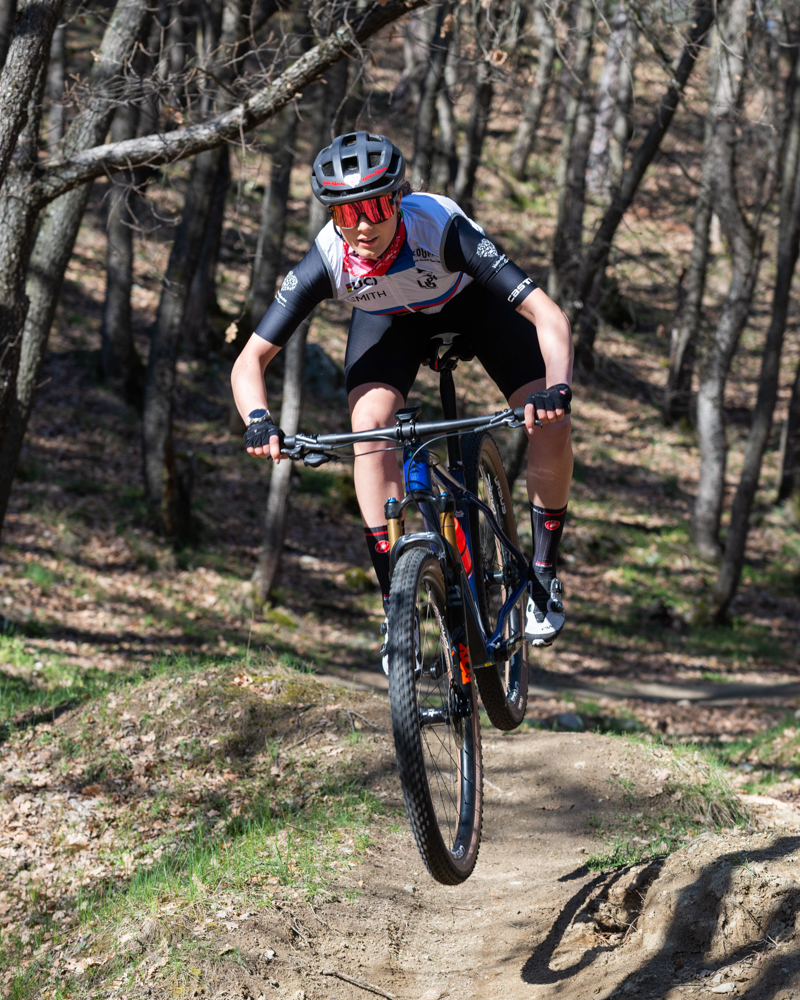
Mountain biking knows no seasons: true enthusiasts continue to ride even in winter, or in rain and bad weather (with caution, carefully evaluating the weather and your ability on the MTB!).
To cycle in winter, including on muddy terrain, you must be properly equipped with:
- thermal clothing;
- waterproof and windproof jacket;
- tubeless wheels with disc brakes.
It’s also essential to carry your mobile phone and cash with you at all times, in case of emergency.
Is it possible to travel by mountain bike?
Although many people prefer gravel or trail bikes for longer-distance travel, mountain biking is a fun alternative, if you’re in the mood for adventure. In fact, it allows you to ride on any country roads and off-road tracks. When you’re planning a trip with a difference, MTB may be the one for you.
The MTB bike is more robust and resistant and has shock absorbers to make riding more comfortable, even on longer trips. You can also make some additional optimisations to improve the experience:
- use special bikepacking luggage to transport clothing, repair kits and essentials;
- choose tubeless wheels and disc brakes to increase riding comfort;
- improve your posture in the saddle by adding handlebar clamps that can be adjusted to the most suitable position for you (possibly choosing a handlebar with an adjustable alpha angle).
We’ve already collected all our tips for mountain bike travel in an article: we recommend reading it if you want more info on this topic.
Mountain bike wheels: all you need to know
What features should you look for in mountain bike wheels? Lightness, responsiveness and rigidity.
To achieve this, the wheels must be made of specific materials such as carbon or aluminum. Carbon is the most powerful alloy, as it’s ultra-light and gives the wheels great responsiveness. Aluminium wheels are a good alternative for amateur cyclists or for training.
The main characteristics
As we have mentioned, MTB wheels are made of carbon or aluminium.
In terms of diameter, the most commonly used measurements are 29’’ and 27.5’’; the channel itself ranges from 25 to 30 millimetres.
Today we tend to prefer tubeless tyres, because they can be used at lower pressure and are therefore more resistant to cuts and punctures, an important consideration on off-road cycling. However, some athletes prefer to stick with the inner tube.
The disc brake is also establishing itself as the favourite braking system, because it allows even, adjustable braking that positively affects the ride.
Bedding in
When buying new wheels for your MTB it’s very important to allow an initial bedding-in phase to allow all the mechanical components to settle down.
With a good bedding-in ride of 100 km or so, the ball bearings inside the hubs settle (the grease is distributed, allowing them to slide more freely), as do the spoke tension and brake sealant.
With correct bedding-in, you can achieve your most efficient, fluid and responsive wheels.
Also read “Bedding in tyres for racing bikes and MTBs: why it's important and how to do it”.
P.S. If you buy Ursus wheels for your mountain bike, you don't need to worry about a drop in spoke tension. Before sale, in fact, we carry out a process of optimisation and adjustment of the tensioning, using specialist machinery. Our engineers then check that the spokes are tensioned to the correct point.
Ursus wheels for MTB
In the Ursus range of MTB wheels you’ll find wheels suitable for all mountain bike disciplines, for both beginners and professional athletes competing in top-level international competitions.
Both entry-level and top-level models share:
- attention to detail;
- analysis of design and materials to optimise performance in the race and during excursions;
- close collaboration between our engineers and the Ursus teams and ambassadors.
Each MTB wheel is produced in-house, with a process that begins with conception and continues to production and testing. We make constant improvements based on feedback from athletes and the results of tests in our laboratories. We only choose lightweight materials that make the bike responsive, such as carbon and Ergal 7075 aluminium.
In addition, you can choose from:
- wheels with 25 or 30 mm channel;
- wheels with diameter 29’’or 27.5’’
- wheels with tubeless tyres or inner tubes.
Regarding brakes, our preferred option for MTB is disc brakes. When buying a pair of Ursus wheels, you’ll always find a pair of Ergal 7075 aluminium hubs that’s ideal for your chosen model.
All our MTB hubs are fitted with extremely smooth ball bearings, designed to reduce the need for maintenance over time.
These are an essential component because they give the wheel a rigid structure and the right reactivity during acceleration. You can find out more by readingour detailed article on the desired characteristics for MTB hubs.
Meanwhile, to check out the full catalogue of Ursus MTB hubs, visit the dedicated page..
MTB wheels and handlebars for amateurs and training
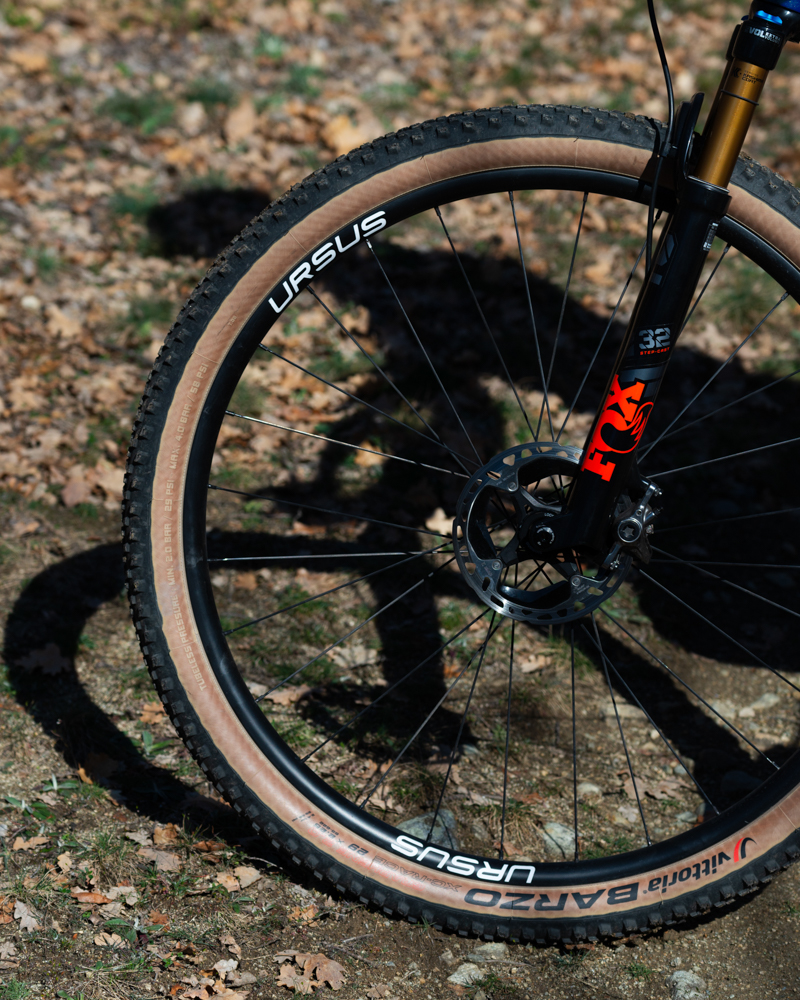
If you’re new to the MTB world, if you’re looking for a quality wheel at moderate cost, or if you want wheels for training, consider the eUrsus models for amateur cyclists and professional training.
We’re talking about aluminium MTB wheels, an excellent choice if you want to balance cost and quality. Ursus Spark 29” wheels are suitable for MTBs and e-MTBs, thanks to their robustness. They feature a tubeless tyre and XD30 hubs, with 28 J-bend black Sapim spokes.
These are versatile wheels that can be used in the various MTB disciplines, for weekend outings, and also during training for competitions. They’re also suitable for beginners because they are safe and easy to handle.
For the best bike setup, you can also use the Magnus H200 handlebar in 7075/T6 aluminium: it’s lightweight but extremely precise and reliable.
Competition wheels and handlebars
Let's now take a look at the top of the Ursus range of handlebars and MTB competition wheels. As you know, Ursus is a partner of professional athletes and teams who use our products in top races, including at international level.
Our top MTB wheels, such as the Kodiak, Diablo and Cliff, feature the most innovative designs and are made with the most high-performance materials. We’re talking about carbon wheels (with the exception of the Cliff, which is made of aluminium and used by athletes for the Enduro World Series), which are ultra-light, rigid and responsive.
The innovative design also extends to our MTB handlebars, such as the Magnus HX.01 series, available in different sizes and with two different stem angles: -12° and -30° for more aggressive riding. These extremely lightweight UD carbon monocoque handlebars are used by cyclists competing in the world’s most important MTB events.
Ursus Kodiak wheels: why they’re perfect for XC and Marathon
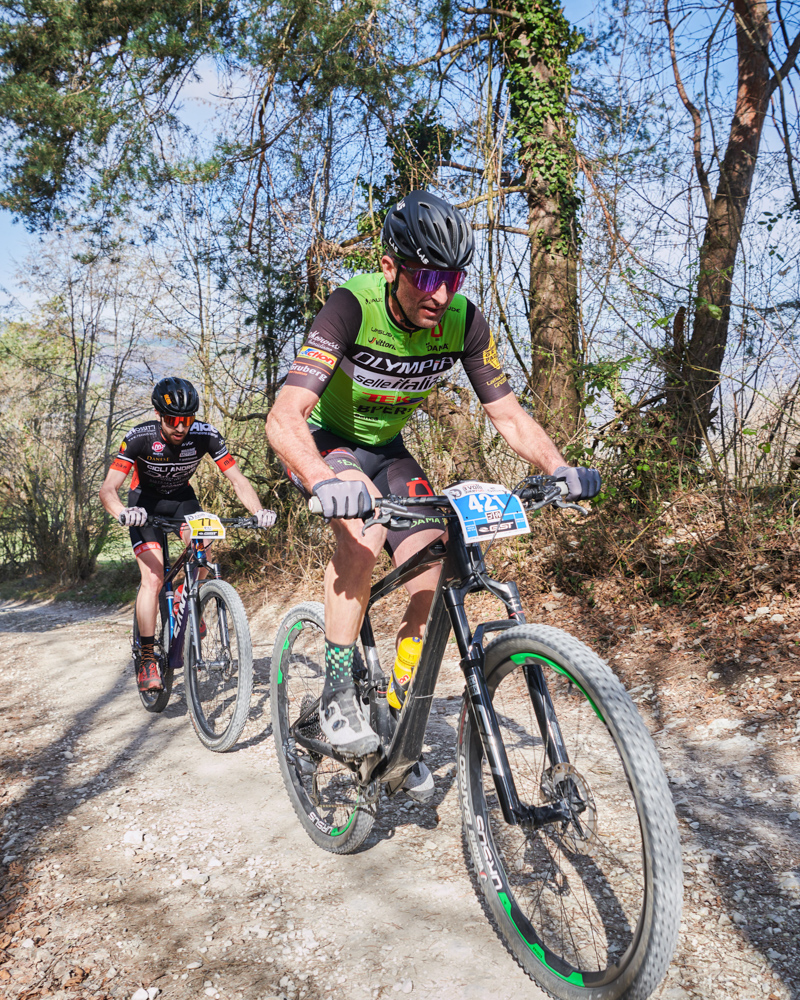
Kodiak wheels by Ursus are designed, manufactured and tested to meet the technical needs of athletes in MTB XC and Marathon competitions.
These disciplines have their own characteristics and require high-performance wheels that can respond appropriately to the demands of bikers, especially on the most technical courses:
- Resistance and endurance in competition, even on rough terrain, combined with the lightness. This is possible thanks to the hookless rim in monocoque UD carbon, with 24mm internal channel and technologically advanced wide tyre. A perfect combination, even at low tyre pressure;
- Fluidity, rigidity and responsiveness, obtained thanks to hubs with Boost technology and greater distance between flanges;
- Comfort while riding, thanks to high-performance bearings and the possibility of using tubed or tubeless tyres at lower pressure and disc brakes.
To find out more, see: “MTB XC and Marathon wheels: the features of Ursus Kodiak”.
Diablo: the Ursus wheels used by Leo Paez and Team Soudal Lee Cougan
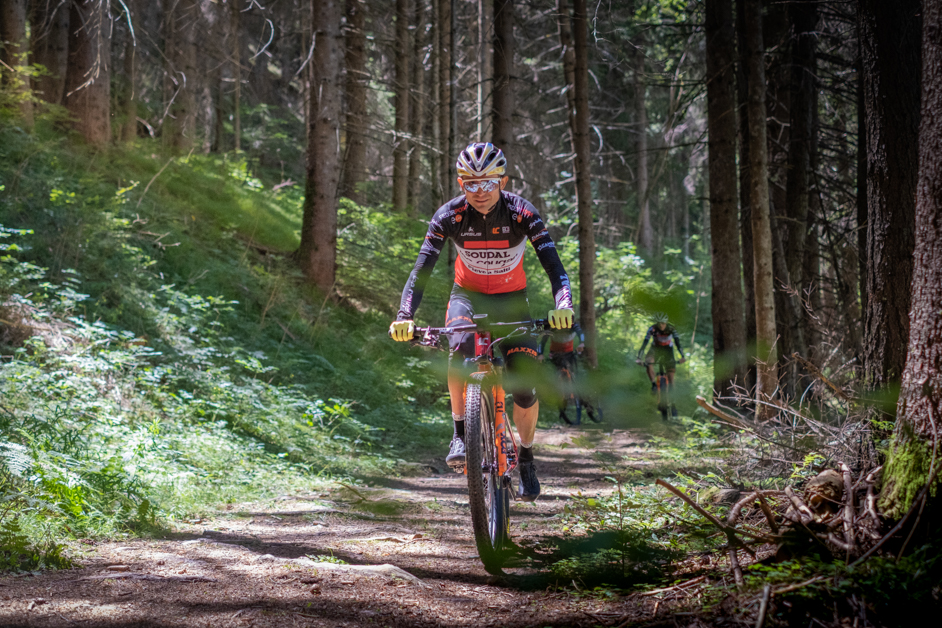
Diablo wheels are a new member of the Ursus family, designed to meet the needs of XC and Marathon cyclists during the toughest challenges. Again in this case, the hookless rim in monocoque UD carbon makes Diablo wheels ultra-lightweight. But we’ve also upgraded the design of our XC50 hubs with an oversized flange to combat friction and braking forces.
You can learn more about the technical specifications of the Ursus Diablo in our dedicated article, in which our experts explain why professional teams choose this model for XC and Marathon competitions.
With these wheels, the athlete benefits from the very best rigidity, lightness and responsiveness: it’s no coincidence that these are the wheels used by professionals in XC and Marathon.
Among the Ursus teams, Diablo is used by the Soudal Lee Cougan team, including the phenomenal Leonardo Paez, who uses Diablo wheels and HX.01 handlebars for races (read our interview with Leo Paez and his feedback on Ursus products).



